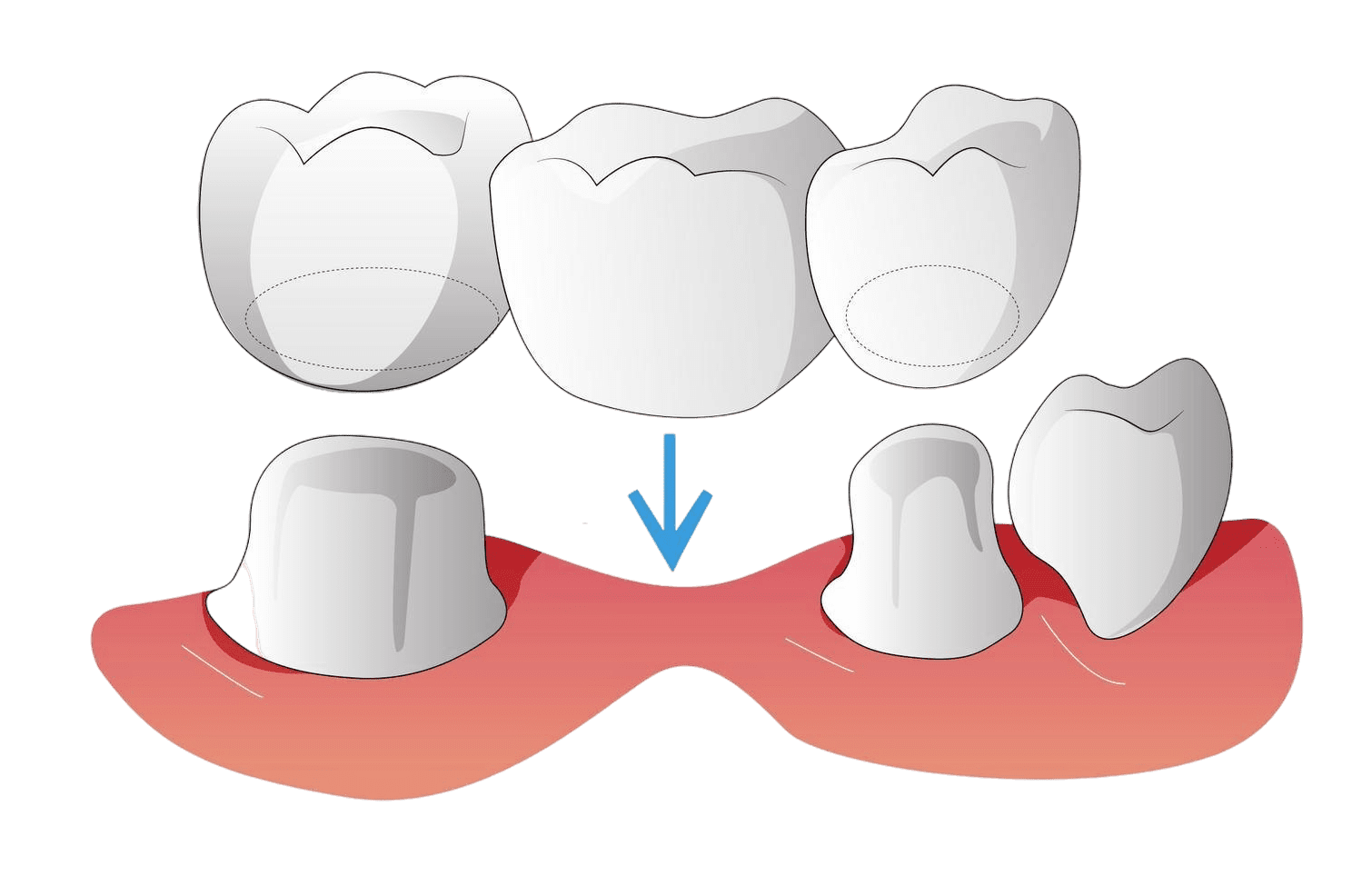Bridging a Gap

A missing tooth doesn’t just affect how your smile looks — it can also impact your ability to chew, speak clearly, and maintain confidence. If you’re missing one or more teeth, we may recommend a fixed dental bridge to restore function and appearance.
What is a bridge?
A dental bridge is a fixed appliance that replaces one or more missing teeth by anchoring a false tooth (or teeth) between two natural teeth or dental implants. These surrounding teeth — called abutment teeth — support the bridge structure and are typically covered with dental crowns to hold everything in place.
Bridges can be made from porcelain, alloys, gold, or a combination of materials, and are designed to blend naturally with your smile. In cases where implants are used instead of natural abutment teeth, the bridge is securely fastened to the implant posts.
Sometimes referred to as “fixed partial dentures,” dental bridges are permanent restorations and cannot be removed by the patient like removable partials.
Why should I get a bridge?
Leaving a gap from a missing tooth can lead to shifting of nearby teeth, bite misalignment, and increased risk of tooth decay or gum disease. It may also affect your ability to chew and speak properly, and may even change the shape of your face over time.
A fixed dental bridge restores the missing tooth or teeth, improving your bite, restoring normal function, and preventing further movement or damage. It also helps preserve your facial structure and enhances your overall smile.
What is the total treatment time?
Placing a bridge typically requires multiple dental visits to ensure a precise fit and long-lasting result. We will prepare the abutment teeth, take impressions, and place a temporary bridge while the permanent one is being crafted.
The entire treatment process usually takes between two and four weeks, depending on the type of bridge used and the complexity of the case.
How do I care for a bridge?
A dental bridge relies on strong support from the surrounding teeth or implants, so maintaining excellent oral hygiene is essential. Brush twice a day for two minutes using a fluoride toothpaste and clean around your bridge daily. We may recommend using a floss threader or special tools to reach beneath the false tooth and between your gums.
With proper care, a fixed bridge can last 8 to 10 years — or longer. Be sure to attend regular dental checkups and professional cleanings to keep both the bridge and your natural teeth in good shape.
Talk to us to learn more about dental bridges and whether this tooth replacement option is right for you.
